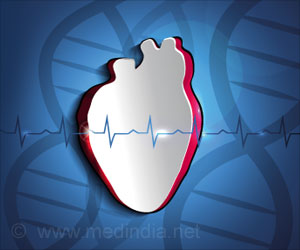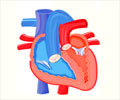
‘Patients with a single lower heart chamber should undergo regular follow-up with their healthcare provider, and adopt a healthy lifestyle to improve the quality of life.’
Read More..Tweet it Now
There are two ventricles in a normal heart - one pumps blood to the lungs, and the other pumps blood to the rest of the body. In children born with only one ventricle, a surgical procedure (the Fontan procedure) diverts blood returning from the veins directly to the main pulmonary artery leading to the lungs, instead of being pumped from the heart.Read More..
Typically, people with Fontan circulation have chronically elevated pressure in their veins and less blood being pumped out of their heart. This can lead to circulatory failure because when the heart pumps less efficiently, it is not able to provide enough oxygen to the cells in the body. Also, these patients often experience ventricular dysfunction, heart failure, heart rhythm disturbances and problems with their liver, kidneys, bones, and other organ systems.
The statement provides recommendations for follow-up care for patients with Fontan circulation, including guidance on strategies for maintaining the health of the heart and organs through "surveillance testing" - routine, systematic evaluation of both cardiovascular and other organs affected by Fontan circulation.
Gaps in knowledge and areas for future investigation are also highlighted, to lay the groundwork for creating a normal quality and duration of life for these unique individuals. "We need more research into the basic biology of single ventricle hearts and whether the damage to other organ systems, such as kidneys, liver, and brain can be mitigated or reversed," said writing group chair Jack Rychik, M.D., Robert and Dolores Harrington endowed chair in cardiology and Professor of Pediatrics, at the Children's Hospital of Philadelphia.
Although life expectancy for people born with one ventricle is lower than average, people with Fontan circulation can live a rich and fulfilling life.
Advertisement
The worldwide population of patients with Fontan circulation grew to an estimated 50,000 to 70,000 patients in 2018, with 40% of patients aged 18 years or older.
Advertisement
Source-Eurekalert










